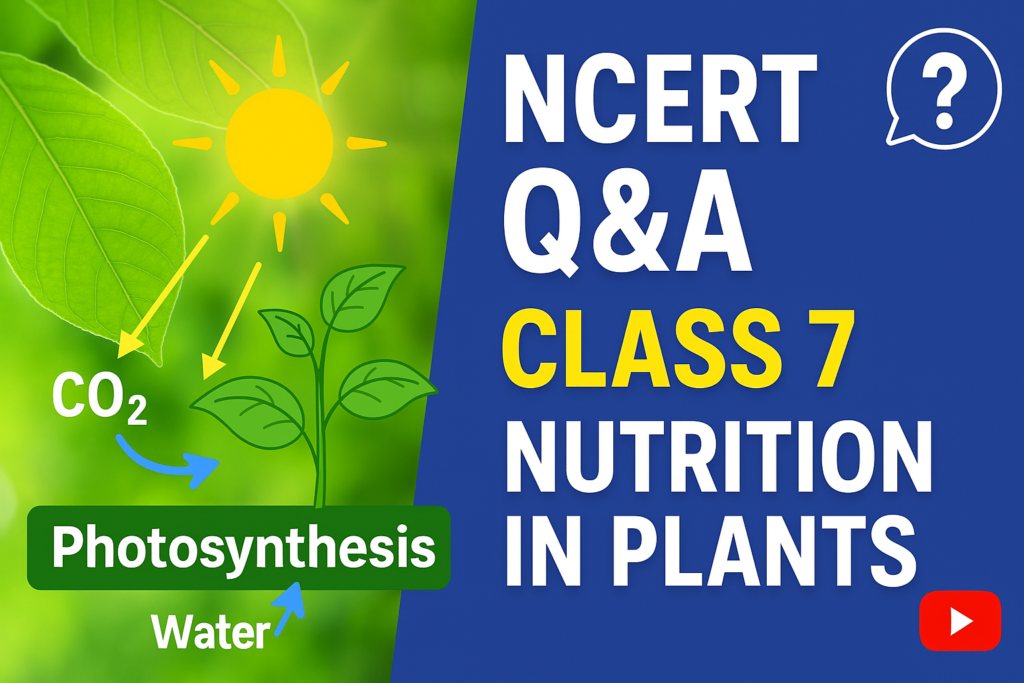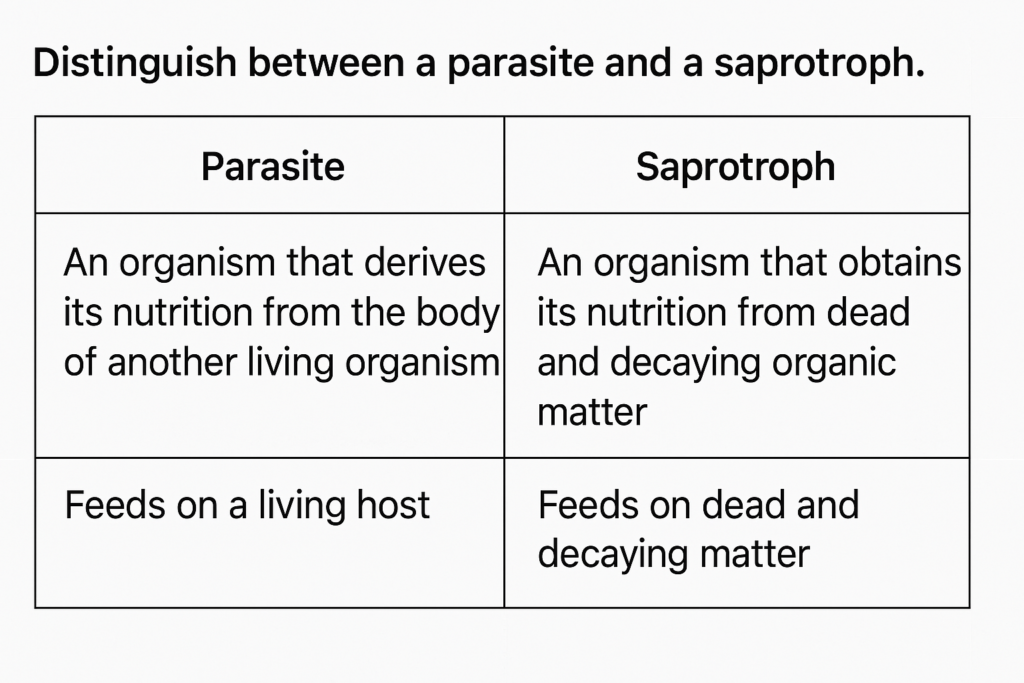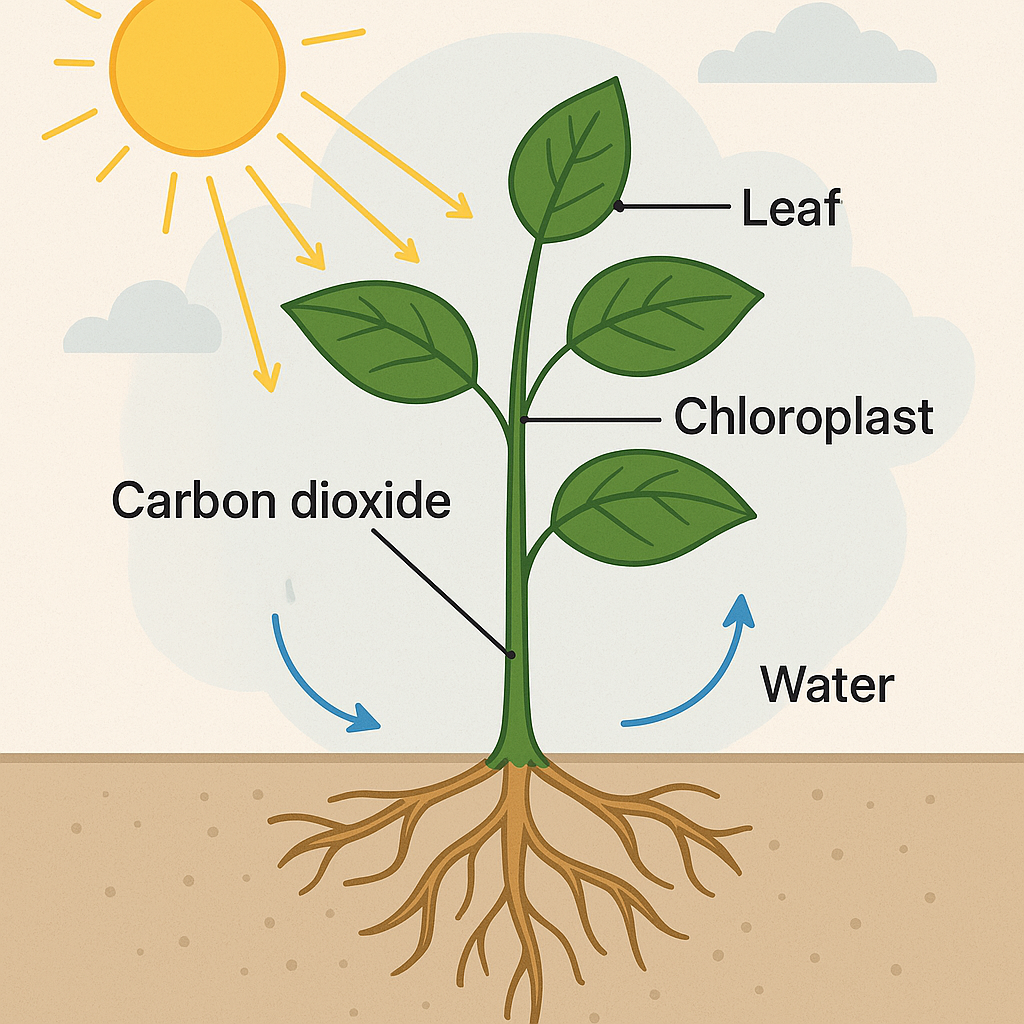class 7 chapter 1 nutrition in plants question answers. Welcome to Station Vidya’s Science Corner! In this blog, we bring you the complete list of NCERT Class 7 Science Chapter 1 – Nutrition in Plants questions and answers. This guide is tailored for students preparing for exams and anyone who wants to revise this important chapter with ease.

Class 7 Chapter 1 Nutrition in plants question answers
Table of Contents
Chapter Overview: Nutrition in Plants
All living organisms need food for energy, growth, and survival. Green plants are unique because they prepare their own food using sunlight, water, and carbon dioxide through a process called photosynthesis. In this chapter, we explore various modes of nutrition in plants such as autotrophic, heterotrophic, parasitic, insectivorous, and saprotrophic.
EXERCISE
Q1. Why do organisms take food?
Organisms take food to obtain energy for growth, development, repairing body parts, and carrying out life processes.
Q2. Distinguish between a parasite and a saprotroph.

| Parasite | Saprotroph |
|---|---|
| Lives on or inside a host and derives nutrients. | Derives nutrients from dead and decaying matter. |
| Example: Cuscuta (Amarbel) | Example: Fungi |
Q3. How would you test the presence of starch in leaves?
- Boil the leaf in water to kill it.
- Boil it in alcohol using a water bath to remove chlorophyll.
- Wash it in warm water to soften.
- Add iodine solution.
If the leaf turns blue-black, starch is present.
Q4. Describe the process of synthesis of food in green plants.

Plants use chlorophyll to capture sunlight. With carbon dioxide from the air and water from the soil, they prepare food (carbohydrates) through photosynthesis. Oxygen is released during this process.
Photosynthesis equation:
Carbon dioxide + Water → (sunlight + chlorophyll) → Carbohydrate + Oxygen
Q5. Show that plants are the ultimate source of food.
All food chains begin with plants. They produce their own food and provide it to herbivores and carnivores. Hence, plants are the primary producers and ultimate source of food for all organisms.
Q6. Fill in the blanks:
(a) Green plants are called autotrophs.
(b) The food synthesized is stored as starch.
(c) Solar energy is absorbed by chlorophyll.
(d) Plants take in carbon dioxide and release oxygen during photosynthesis.
Q7. Name the following:
(i) Parasitic plant – Cuscuta
(ii) Partially autotrophic plant – Pitcher plant
(iii) Pores for gas exchange – Stomata
Q8. Tick the correct answer:
(a) Cuscuta is an example of:
✔️ (ii) Parasite
(b) The plant which traps and feeds on insects:
✔️ (iii) Pitcher plant
Q9. Match the following:
| Column I | Column II |
|---|---|
| Chlorophyll | Leaf |
| Nitrogen | Rhizobium |
| Cuscuta | Parasite |
| Animals | Heterotrophs |
| Insects | Pitcher plant |
Q10. True or False:
(i) Carbon dioxide is released during photosynthesis. – ❌ False
(ii) Plants that synthesize food are called saprotrophs. – ❌ False
(iii) The product of photosynthesis is not a protein. – ✔️ True
(iv) Solar energy is converted into chemical energy during photosynthesis. – ✔️ True
Q11. Which part of the plant takes in carbon dioxide for photosynthesis?
✔️ (ii) Stomata
Q12. Plants take carbon dioxide from the atmosphere mainly through their:
✔️ (iv) Leaves
Q13. Why do farmers grow crops in greenhouses?
Greenhouses provide a controlled environment that helps in better growth and yield. They protect plants from adverse weather, pests, and diseases, and ensure optimum temperature, humidity, and light.
✅ Key Takeaways
- Photosynthesis is the process by which green plants prepare food.
- Plants need sunlight, chlorophyll, water, and carbon dioxide for food synthesis.
- Heterotrophic plants like Cuscuta depend on others for food.
- Fungi obtain nutrients from dead matter (saprotrophic nutrition).
- Greenhouses help in growing crops efficiently.
📚 Conclusion
We hope this guide to Nutrition in Plants – Class 7 Science Chapter 1 helps you understand the topic thoroughly. Bookmark this blog for future reference, and don’t forget to share it with your classmates!
👉 For more study materials, worksheets, and science videos, explore our site: StationVidya.com
📺 Subscribe to our YouTube Channel: Station Vidya
Related video: https://www.youtube.com/watch?v=ABL7gcdcbAc&t=10s
Related article: https://stationvidya.com/science-class-8th-chapter-1-question-answer/
You can follow us on Instagram: https://www.instagram.com/stationvidya/
Facebook: https://www.facebook.com/stationvidya/
You tube: https://www.youtube.com/@stationvidya/
We hope you’d loved the content , please do like, share and comment.
Subscribe for notification

Leave a Reply